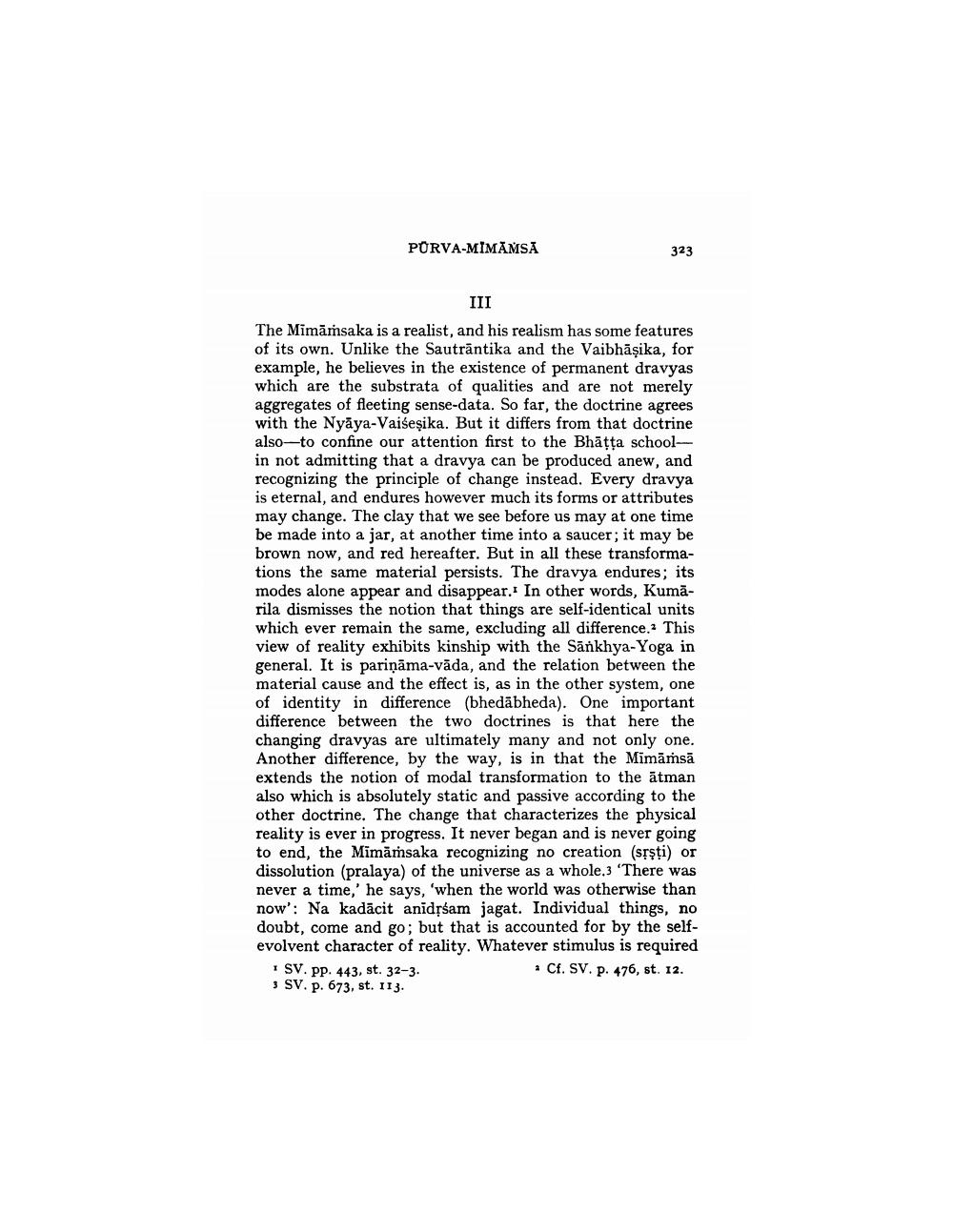________________
PORVA-MIMĀMSA
323
III
The Mimārsaka is a realist, and his realism has some features of its own. Unlike the Sautrāntika and the Vaibhāşika, for example, he believes in the existence of permanent dravyas which are the substrata of qualities and are not merely aggregates of fleeting sense-data. So far, the doctrine agrees with the Nyāya-Vaiseşika. But it differs from that doctrine also-to confine our attention first to the Bhāțța schoolin not admitting that a dravya can be produced anew, and recognizing the principle of change instead. Every dravya is eternal, and endures however much its forms or attributes may change. The clay that we see before us may at one time be made into a jar, at another time into a saucer; it may be brown now, and red hereafter. But in all these transformations the same material persists. The dravya endures; its modes alone appear and disappear. In other words, Kumārila dismisses the notion that things are self-identical units which ever remain the same, excluding all difference. This view of reality exhibits kinship with the Sānkhya-Yoga in general. It is pariņāma-vāda, and the relation between the material cause and the effect is, as in the other system, one of identity in difference (bhedābheda). One important difference between the two doctrines is that here the changing dravyas are ultimately many and not only one. Another difference, by the way, is in that the Mimāṁsā extends the notion of modal transformation to the atman also which is absolutely static and passive according to the other doctrine. The change that characterizes the physical reality is ever in progress. It never began and is never going to end, the Mimārsaka recognizing no creation (srsti) or dissolution (pralaya) of the universe as a whole,3 'There was never a time,' he says, 'when the world was otherwise than now': Na kadācit anidȚsam jagat. Individual things, no doubt, come and go; but that is accounted for by the selfevolvent character of reality. Whatever stimulus is required I SV. pp. 443, st. 32-3.
• Cf. SV. p. 476, st. 12. 3 SV. p. 673, st. 113.




